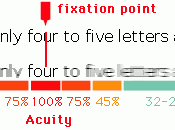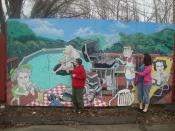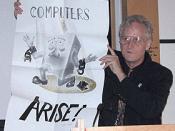Hypertext is a special type of database, on which objects like text, pictures, music,
and videos, could be linked to each other. For example, while reading a document about
space, you might click on the phrase Mars, and this could display Mars pictures, a more
specific article about Mars or even videos about the "red planet. According to
http://www.webopedia.com/TERM/H/hypertext.html , hypertext was invented by Ted
Nelson in the 1960s. He created this electronic text to give the readers more freedom
and to separate from the traditional sequence-writing. Hypertext mainly distinguish itself
from normal text because of the ability that it posses to link to other data, this ability
could be very helpful to readers because it could help them to better understand what
wants to be transmitted.
To analyze the difference between Readerly and Writerly text, there should be first
a definition for them. According to http://www.iath.virginia.edu/elab/hfl0250.html,
Readerly texts "do not locate the reader as a site of the production of meaning, but only
as the receiver of a fixed, pre-determined, reading."
In other words Readerly texts give
the reader a predetermined meaning, they limit the reader to "see the show" not to
create it. On the other hand Writerly text lets the reader participate "in the making of the
show". Writerly text gives the reader the opportunity to create a meaning out of the text
not just receive the predetermined meaning. Now it's obvious that these two types of text
are just the opposite, one gives the reader the freedom to create a meaning out of the
text, the other takes that freedom away from the reader.
The "non-linear" tradition in literature as it name says does not follow the classic
approach on which there is a beginning, a climax and then the closure. This non-linear
tradition gives the reader the freedom to read the text in the way he wants, even thought
sometimes the author suggest a how to read it. This freedom could lead the reader to
create his own meaning of the text more easily. According to
http://jefferson.village.virginia.edu/elab/hfl0117.html , a good example of non-linear
narrative is Julio Cortazar's Hopscotch. This book has two approved readings . One is the
normal or traditional way to read a book, this is to read it from chapter 1 to chapter 73,
and then there is the non-linear way that is read backwards.


